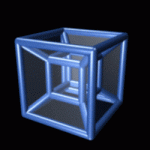I read that the spacetime curvature at the horizon of a black hole is larger for lighter black holes.
Binary mergers of the lightest black holes are, therefore, the strongest regions of gravity that we know of, and are ideal for testing strong field predictions of general relativity.
Gravitational-wave physics will be capable of probing the strong field predictions of GR, and next-generation gravity wave detectors are being planned, e.g., the Einstein Telescope and the Cosmic Explorer.

https://en.wikipedia.org/wiki/Einstein_Telescope
https://en.wikipedia.org/wiki/Cosmic_Explorer_(gravitational_wave_observatory)
Binary mergers of the lightest black holes are, therefore, the strongest regions of gravity that we know of, and are ideal for testing strong field predictions of general relativity.
Gravitational-wave physics will be capable of probing the strong field predictions of GR, and next-generation gravity wave detectors are being planned, e.g., the Einstein Telescope and the Cosmic Explorer.
https://en.wikipedia.org/wiki/Einstein_Telescope
https://en.wikipedia.org/wiki/Cosmic_Explorer_(gravitational_wave_observatory)
Where do they get the money for these huge Physics experiments? Isn't a bit of thought and pencil and paper cheaper? 😀
I suspect we need a new way of thinking about Gravity.
String theory is, frankly, a mess. Loop Quantum Gravity incomprehensible. Never mind all the garbage stuff like Electro-Gravity...
This is a good expose of the lamentable state of String Theory, and well-written and occasionally hilarious:
https://arstechnica.com/science/202...ything/?utm_source=pocket-newtab-global-en-GB
I am like John Baez, but not as good. He likes 4 dimensions, and ellipses and symmetry. Which is all quite the Kepler Problem with inverse square forces.
https://johncarlosbaez.wordpress.com/2015/03/17/planets_in_the_4th_dimension/
If I understand what he is saying, it is TIME that is the main event, but dependent on the curvature, of course. Space is emergent. I am playing with turning Quaternions on their heads, and making Space imaginary and Vector, and Time the Scalar.
But a new variable concept of Time. Quite hard to explain, but it's making sense to me.

Amazingly, he thinks the Kepler Problem with ellipses and conics, the Harmonic Oscillator, Classical Mechanics and Quantum Mechanics and General Relativity are all much the same problem. Just think symmetry in 4 dimensions.
https://en.wikipedia.org/wiki/Regular_4-polytope
Thought, TBH, I think the Quark/Gluon Problem might need Octonions. 8 fold symmetry, it would appear.
He also thinks we shall look back on this era of confusion with amazement. Someone will figure it out in a simple way, and everyone else will look back and say "It's so simple. Why didn't we think of that!"
The trick must be just to have enough intuition to identify what is important, and spend time on it. This is what good mathematicians do. Otherwise your career is wasted! 🙁
I suspect we need a new way of thinking about Gravity.
String theory is, frankly, a mess. Loop Quantum Gravity incomprehensible. Never mind all the garbage stuff like Electro-Gravity...
This is a good expose of the lamentable state of String Theory, and well-written and occasionally hilarious:
https://arstechnica.com/science/202...ything/?utm_source=pocket-newtab-global-en-GB
I am like John Baez, but not as good. He likes 4 dimensions, and ellipses and symmetry. Which is all quite the Kepler Problem with inverse square forces.
https://johncarlosbaez.wordpress.com/2015/03/17/planets_in_the_4th_dimension/
If I understand what he is saying, it is TIME that is the main event, but dependent on the curvature, of course. Space is emergent. I am playing with turning Quaternions on their heads, and making Space imaginary and Vector, and Time the Scalar.
But a new variable concept of Time. Quite hard to explain, but it's making sense to me.
What’s this fourth dimension I’m talking about here? It’s a lot like time. But it’s not exactly time. It’s the difference between ordinary time and another sort of time, which flows at a rate inversely proportional to the distance between the planet and the sun.
Amazingly, he thinks the Kepler Problem with ellipses and conics, the Harmonic Oscillator, Classical Mechanics and Quantum Mechanics and General Relativity are all much the same problem. Just think symmetry in 4 dimensions.
https://en.wikipedia.org/wiki/Regular_4-polytope
Thought, TBH, I think the Quark/Gluon Problem might need Octonions. 8 fold symmetry, it would appear.
He also thinks we shall look back on this era of confusion with amazement. Someone will figure it out in a simple way, and everyone else will look back and say "It's so simple. Why didn't we think of that!"
The trick must be just to have enough intuition to identify what is important, and spend time on it. This is what good mathematicians do. Otherwise your career is wasted! 🙁
Last edited:
Octonions. 8 fold symmetry
You certainly know your onions, Steve, all eight of them!
This is a good expose of the lamentable state of String Theory, and well-written and occasionally hilarious:
https://arstechnica.com/science/202...ything/?utm_source=pocket-newtab-global-en-GB
I love the way they've given names to particle superpartners in supersymmetric string theory.
- The superpartner of a fermion begins with an “s”
- The superpartner of a boson ends in “ino”
I am like John Baez, but not as good. He likes 4 dimensions, and ellipses and symmetry.
https://johncarlosbaez.wordpress.com/2015/03/17/planets_in_the_4th_dimension/
A new notion of time?

Checking out the mathematical details is a straightforward exercise in vector calculus - yeah, right! 😱
I'm relieved to read it’s not some new physics theory, but just a different way of thinking about Newtonian physics.
Cue the tesseract! 😀
Attachments
The tesserect facinates me. Thanx for the animation.

Rudy Rucker writes some good books and short stories that help visualization of more than 3D+time. A good one on infinities as well. Probably wrote some text books on the subject too (Dr Rudolf Rucker).
Out of that comes an “ideal” speaker. A 4D cube who’s pulsations in 3D generate a perfect point source with no mass and DC to light frequency response.
dave
Rudy Rucker writes some good books and short stories that help visualization of more than 3D+time. A good one on infinities as well. Probably wrote some text books on the subject too (Dr Rudolf Rucker).
Out of that comes an “ideal” speaker. A 4D cube who’s pulsations in 3D generate a perfect point source with no mass and DC to light frequency response.
dave
Therefore stationary object in space moves through time at c which becomes confusing if there is only one temporal dimension since speed is a differential quantity.We're all travelling through spacetime at the speed of light....
Another more fundamental temporal dimension may be needed to resolve the issue.A new notion of time?
Last edited:
I read that the spacetime curvature at the horizon of a black hole is larger for lighter black holes.
Binary mergers of the lightest black holes are, therefore, the strongest regions of gravity that we know of, and are ideal for testing strong field predictions of general relativity.... SNIP
Do you have a reference for that statement I can check, Galu? Seems a bit wild and speculative to me! Not like you to drop your scientific standards... we are, after all, PROFESSIONALS!
The notorious 4D Tesseract GIF is just a visualisation technique for us mere 3D Space + Time humans.
It gets worse:
See in 4D there is no rotation axis, different from your 3D Bike Wheels. Rotation is just around a plane. So it can look like translation or rotation, or a mixture of both, as here.
Important things to know:
Clifford Algebras only work in 1D, 2D, 4D and 8D.
Hamilton in 1843 nearly knocked himself out trying to extend the 2D Complex Plane into 3D. The answer was actually 4D, as employed in computer graphics to this day.
But he was (probably) thinking Euclidean Space.
https://en.wikipedia.org/wiki/Quaternion
I have no idea how Einstein did what he did in 1905 with Special Relativity. But the truly weird thing about Special Relativity is that the Lorentz Transform is best considered a rotation, mathematically.
Everybody knows E = m x c^2 ... the bomb equation.
Fewer know E^2 = m^2 x c^4 + p^2 x c^2 ...which is the fuller Special Relatavity expression for massive particles. Photons are different, being massless.
Minkowski, in 1908, tried to formalise it:
x^2 + y^2 + z^2 - (c^2 x t^2) = s^2
Which is just to say the distance s between events in SpaceTime is the same for all inertial observers.
https://en.wikipedia.org/wiki/Minkowski_space
Actually doesn't help much with Gravity, as Einstein noticed. He needed the fuller General Relativity theory.
Which is where we still are today. Stuck! 😳
Last edited:
Do you have a reference for that statement I can check, Galu? Seems a bit wild and speculative to me! Not like you to drop your scientific standards... we are, after all, PROFESSIONALS!
A quick google is all that is required, Steve!
For example:
https://bigthink.com/starts-with-a-...at,of light from an intervening mass: the Sun.
Therefore stationary object in space moves through time at c which becomes confusing if there is only one temporal dimension since speed is a differential quantity.
A stationary object moves through time at a specific rate with which we are all familiar - one second per second.
https://www.forbes.com/sites/starts...me-surprise-time-isnt-just-another-dimension/
I understand but still to me Δt/Δt is the same as Δx/Δx, meaningless and fell short to define a rate. As a differential quantity, a rate such as speed (ie Δx/Δt or Δt/Δτ) needs at least 2 axis.
...to me Δt/Δt is the same as Δx/Δx, meaningless and fell short to define a rate.
I read in the Physics Stack Exchange that you can define a "speed" through time as "the proper time registered by the object per coordinate time".
https://physics.stackexchange.com/q...otion-through-spacetime-at-the-speed-of-light
Perhaps some clarification can be found in this article: https://iep.utm.edu/proper-t/#H2
"The essence of the Special Theory of Relativity is that it connects three distinct quantities to each other: space, time, and proper time. ‘Time’ is also called coordinate time or real time, to distinguish it from ‘proper time’."
To be perfectly honest, it's all beyond me! 😵
BTW, I have a simple planar embedding of the tesserect I hadn't seen in books, the (graph theoretic) "dual" of which gives a neat user-interface for 2^4 (four binary choices) faces representing a complete decision tree, with all the right adjacency properties (of the tesserect). Kind of a Rubik-like square that can be folded four ways.
You lost me, wchang, after "planar embedding of the tesseract". 🙂

Here's what I know about the tesseract:
Four-dimensional geometry is Euclidean geometry extended into one additional dimension. For example:
0D - point
1D - line
2D - square
3D - cube
4D - tesseract
Just as the dimension of depth can be added to a square to create a cube, a fourth dimension can be added to a cube to create a tesseract.
Attached is an animation that shows the progression from a point (n=0), to a line (n=1), to a square (n=2), to a cube (n=3), to a tesseract (n=4).
Here's what I know about the tesseract:
Four-dimensional geometry is Euclidean geometry extended into one additional dimension. For example:
0D - point
1D - line
2D - square
3D - cube
4D - tesseract
Just as the dimension of depth can be added to a square to create a cube, a fourth dimension can be added to a cube to create a tesseract.
Attached is an animation that shows the progression from a point (n=0), to a line (n=1), to a square (n=2), to a cube (n=3), to a tesseract (n=4).
Attachments
Perhaps this video is already embedded somewhere upthread. I didn’t take the time to scan the entire thread to find out. Anyhow, watch this high-school kid confidently and clearly explain the 4th dimension. It’s obvious that he hasn’t yet discovered girls. 😀
Last edited:
In the news, Leonardo da Vinci discovers gravity.
https://gizmodo.com/leonardo-da-vinci-gravity-sketches-experiments-1850123741
https://gizmodo.com/leonardo-da-vinci-gravity-sketches-experiments-1850123741
It would appear that Leonardo understood that the vertical acceleration of a projectile is independent of its horizontal motion.
However, he used the wrong equation in the correct way, in contrast to Eric Morcambe who played all the right notes, but not necessarily in the right order!
However, he used the wrong equation in the correct way, in contrast to Eric Morcambe who played all the right notes, but not necessarily in the right order!
- Home
- Member Areas
- The Lounge
- Does this explain what generates gravity?

